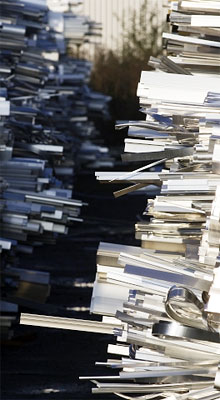May 27 2010
Hydro will build Norway’s largest plant for aluminium recycling at Karmøy. The plant will have an initial capacity of 35,000 mt. The total investment will be approximately NOK 260 million and will establish close to 40 new jobs in the plant.
Final build decision is planned for the spring of 2011. The new recycling facility is planned to be operative from summer 2012. It will then be in position to take in and recycle dross and scrap from all of Hydro’s aluminium plants in Norway. Dross is a residue from the casting process, with high aluminium content.
 SCRAP: The planned new plant at Karmøy will recycle dross and scrap from all of Hydro’s aluminium plants in Norway, as well as from external sources in Scandinavia and Iceland. (Photo: Dag Jenssen)
SCRAP: The planned new plant at Karmøy will recycle dross and scrap from all of Hydro’s aluminium plants in Norway, as well as from external sources in Scandinavia and Iceland. (Photo: Dag Jenssen)
In addition the plant will be able to recycle aluminium from external sources in Scandinavia and Iceland.
The recycled metal will be utilized by Hydro’s product casthouse at Karmøy, and will partly offset the previous Søderberg potlines, closed in March 2009.
The construction work will start when the demolition of the closed Søderberg lines has freed up the area to be used for the recycling plant. The decision kicks off the process to obtain the necessary approvals based upon an environmental impact assessment. These further evaluations will also clarify to what extent parts of the concrete and steel structures in the former potlines can be utilized.
Aluminium can be recycled infinitely without the loss of properties or quality. Aluminium recycling only requires five percent of the energy needed to produce primary aluminium. These are reasons why aluminium recycling is on the increase all over the world. In Norway Hydro so far has been recycling aluminium in Holmestrand.
First stage in the construction will include one tilting rotating furnacewith a capacity of 35,000 mt as well as all buildings, filter plant and infrastructure. The stage also includes equipment for liquid metal transportation into the product casthouse as well as for casting into sows.
Stage two, planned to start when the first furnace is running at full capacity, will include a second furnace with a capacity of 35,000 mt.